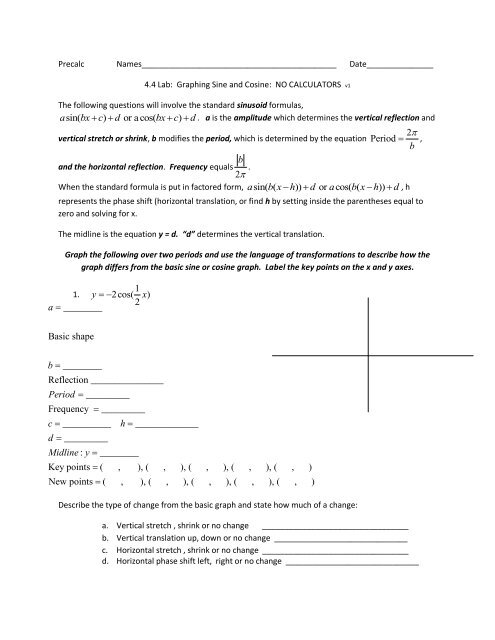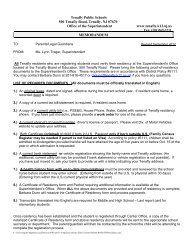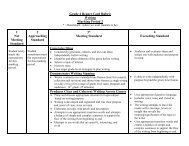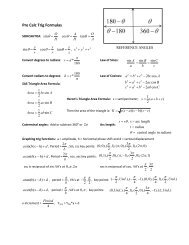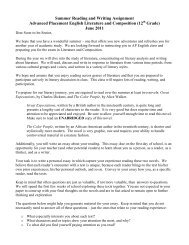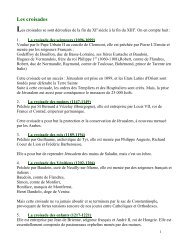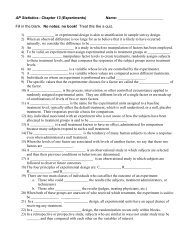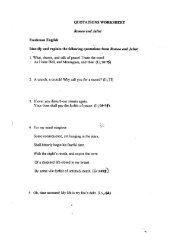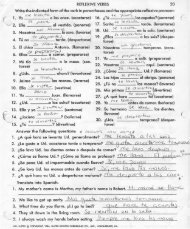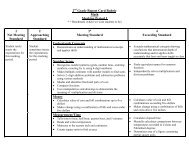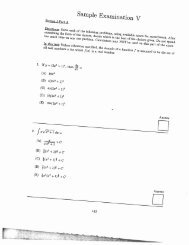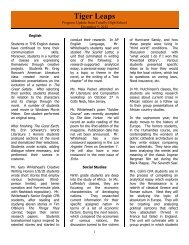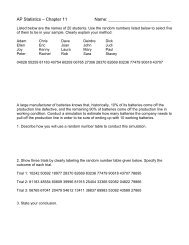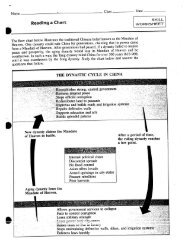Lab Worksheet
Lab Worksheet
Lab Worksheet
Create successful ePaper yourself
Turn your PDF publications into a flip-book with our unique Google optimized e-Paper software.
Industrial Espionage______________________________________________________________________________IntroductionIndustrial EspionageOne of the problems we face in our field of information assurance is the paucity of credible dataabout threats to our systems. We suffer from problems of ascertainment and problems of datacollection in this field; without going into details here, there is plenty of reason to believe thatwe do not notice many of the system intrusions that take place and that many of those that arenoticed are not reported in a way that allows development of a statistical base.[3]The US National Counterintelligence Center (NACIC) which later became the Office of theNational Counterintelligence Executive (ONCIX) have been reporting annually to Congresssince 1995 about foreign economic collection and industrial espionage.[4] There are somevaluable findings and trends in industrial espionage that can help us interfere with industrialspies.First of all, Section 809 of the US Intelligence Authorization Act for Fiscal Year 1995 definedforeign industrial espionage as ―industrial espionage conducted by a foreign government or by aforeign company with direct assistance of a foreign government against a private United Statescompany and aimed at obtaining commercial secrets.‖[5]. Throughout the decade of reporting,there has been little change in the list of targeted technologies; the 2004 report lists thefollowing: Information systems are a key target, with more than 40% of the PhDs employed inthe field in 2001 (the most recent year of available data) being foreign-born (compared with 10%of all PhD scientists and engineers overall in the USA). Sensors, aeronautics, electronics,armaments and energetic materials are other industrial targets for espionage. The 1996 reportnotably added biotechnology, information warfare, manufacturing processes, nuclear systems,space systems, telecommunications and weapons effects and countermeasures to the list oftargets.[3]Kabay (2007)[4]Some archival NACIC and current ONCIX reports are freely available as PDF files from< http://www.ncix.gov/publications/reports/index.html >..[5] NACIC (1995) report, p. 1____________________________________________________________________________________________Copyright © 2008 M. E. Kabay. All rights reserved. Page 2 of 16
3.2y 3cos( x) 23a ________Basic shapeb ________Reflection _______________Period _________Frequencyc__________d _________ _________Midline : y ________h_____________Key points ( , ), ( , ), ( , ), ( , ), ( , )New points ( , ), ( , ), ( , ), ( , ), ( , )Describe the type of change from the basic graph and state how much of a change:a. Vertical stretch , shrink or no change _________________________________b. Vertical translation up, down or no change ______________________________c. Horizontal stretch , shrink or no change _________________________________d. Horizontal phase shift left, right or no change ______________________________
Specify the period and amplitude of each function.Then give the viewing window [X-min, x-max], [y-min, y-max]5. y4sin(3 x)ya. Period = ______________b. Amplitude = ___________c. X-window________________d. Y-window________________x6.2 1y cos( x)3 4a. Period = ______________yb. Amplitude = ___________xc. X-window________________d. Y-window________________7. Write y cos( x)as phase shift of y cos( x)_______________________________
Describe the transformations required to obtain the graph of y 2 from the graph of y 1 .y 2cos( x ) and y cos( x )3 48.1 2a. Amount of vertical stretch , shrink or no change ______________________________b. Amount of Vertical translation up, down or no change ___________________________c. Amount of Horizontal stretch , shrink or no change __________________________d. Amount of Horizontal phase shift left, right or no change ________________________y sin( x ) 2 and y 3sin( x ) 29.1 2a. Amount of vertical stretch , shrink or no change ______________________________b. Amount of Vertical translation up, down or no change ___________________________c. Amount of Horizontal stretch , shrink or no change __________________________d. Amount of Horizontal phase shift left, right or no change ________________________
State the amplitude, period, the phase shift and the vertical translation.10. y 3.5sin(2 x ) 12a. Amplitude ______________________________b. Period ___________________________c. Amount of Vertical translation up, down or no change __________________________d. Amount of Horizontal phase shift left, right or no change ________________________11.2 1y cos( x) 33 4 2a. Amplitude ______________________________b. Period ___________________________c. Amount of Vertical translation up, down or no change __________________________d. Amount of Horizontal phase shift left, right or no change ________________________
Bonus1: Graph the following over a two period interval3 5 2y cos( x) 4 12 5a ________Basic shapeb ________Reflection _______________Period _________Frequencyc__________d _________ _________Midline : y ________h_____________Key points ( , ), ( , ), ( , ), ( , ), ( , )New points ( , ), ( , ), ( , ), ( , ), ( , )Bonus 2: Ferris Wheel Problem: A Ferris Wheel 60 ft. in diameter makes one revolution every 20seconds. If the center of the wheel is 40 feet above the ground, how long after reaching the low point isa rider 35 feet above the ground?M = __________________m = __________________A = _______________________________________________D = __________________p = __________________B = __________________T = _______________ and is ______________________________________________f(t)=_______________________________________


